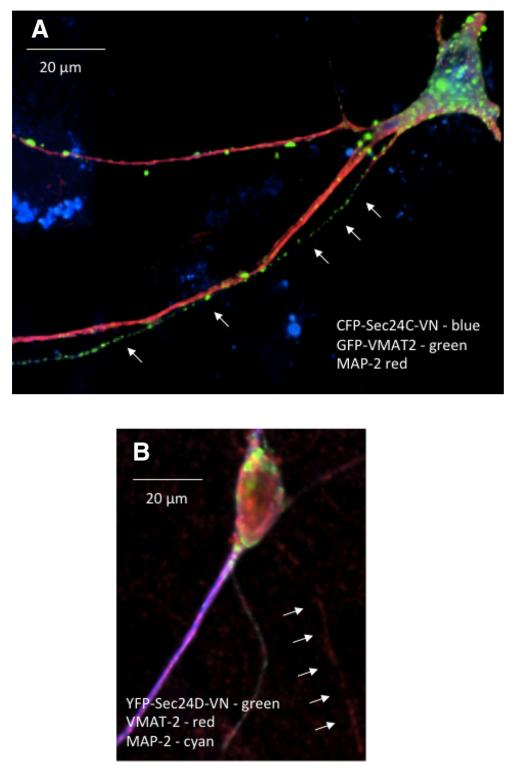Figure 8.
Delivery of GFP-tagged (A) and endogenous VMAT2 (B) to the MAP-2-negative compartment in the presence of dominant-negative SEC24C (A) or dominant-negative SEC24D (B). Rat dorsal raphe neurons were transfected with plasmids encoding GFP–VMAT2 and CFP–SEC24C–VN (1:5 ratio; A) or YFP–SEC24D–VN (B) using Lipofectamine2000. After 48 h, the neurons were fixed and stained for MAP-2 (A, B) and VMAT2 (B). Alexa Fluor 568-conjugated (A) or Alexa Fluor 405-conjugated (B) secondary antibodies were used to visualize MAP-2; VMAT2 was detected with an Alexa Fluor 568-conjugated secondary antibody (B). A 3D reconstruction was generated from z stacks using NIH Image J to visualize VMAT2 containing vesicles: VMAT2 was unequivocally assigned to the MAP-2-negative compartment in 3 of 8 and 2 of 8 examined neurons coexpressing SEC24C and SEC24D, respectively. Small arrows point to VMAT2 fluorescence present in MAP-2-negative axonal extensions. Data are from three independent experiments (i.e., 3 individual preparations of rat dorsal raphe neurons that were independently transfected in parallel with a plasmid encoding CFP–SEC24C–VN or YFP–SEC24D–VN). Scale bars, 20 μm.

